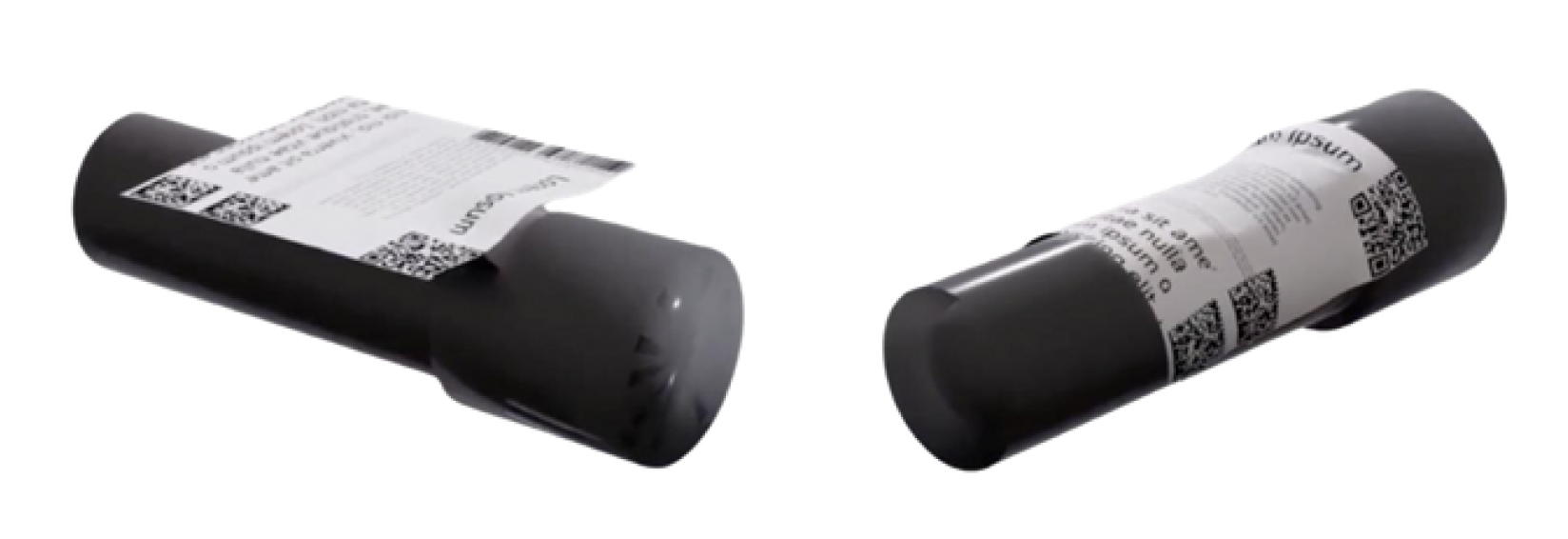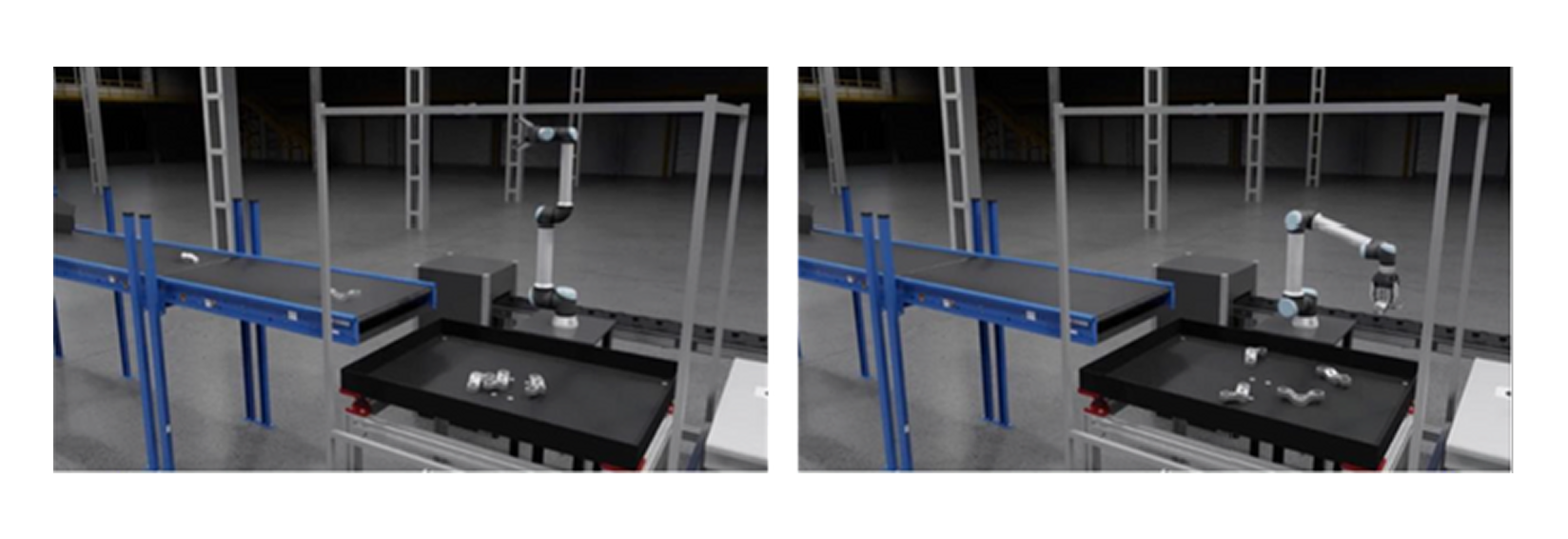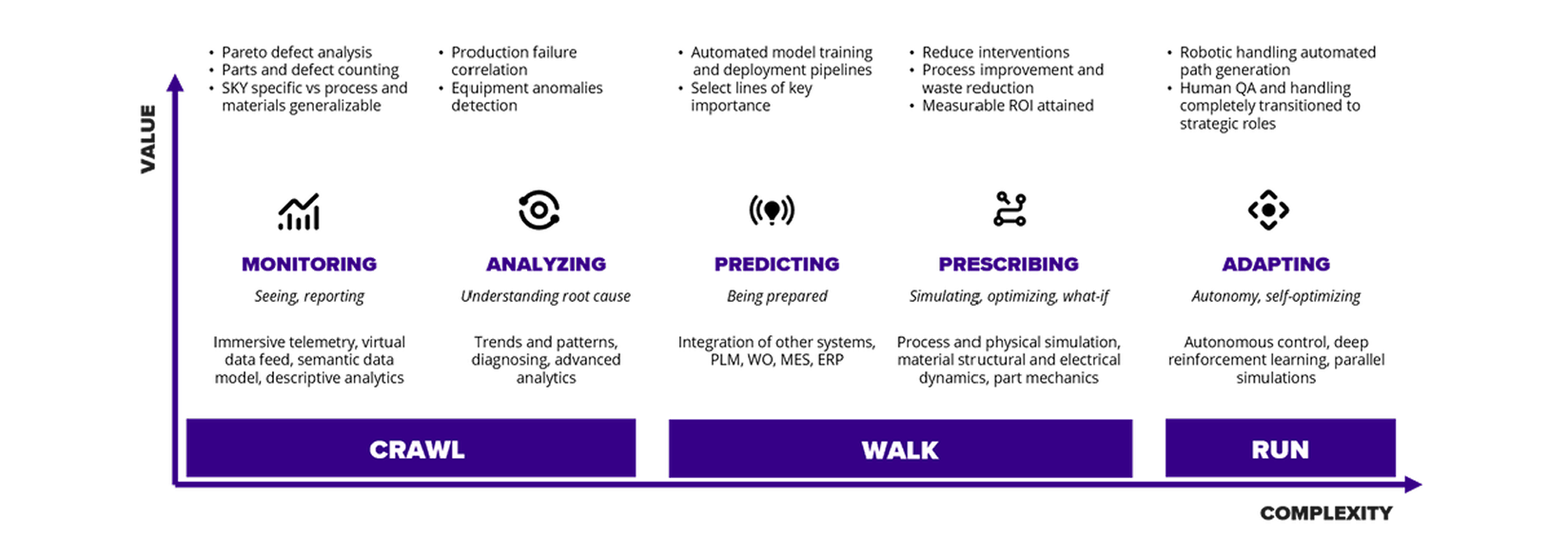
Closing the Gaps: From Missing Features to Strategic Clarity with AI Visual Inspection
In today’s high-mix manufacturing landscape, traditional manual visual inspections struggle to maintain consistent quality, often resulting in costly errors and delays.
Humans cannot keep up with the pace of product proliferation, rising customization demands, and the pressure for near-perfect quality.
AI-powered visual inspection is emerging as the transformative solution to closing these gaps and ushering in a new era of strategic clarity. By combining part-specific precision with generalized defect knowledge, AI delivers tangible benefits: fewer escaped defects, measurable labor cost savings, higher throughput, and actionable insights for continuous improvement. Adopting a phased approach that balances investment and value, AI visual inspection is no longer a question of if — but when, for manufacturers seeking to achieve and sustain a competitive edge in the evolving high-mix environment.
This article addresses the critical gaps in detection accuracy, operational efficiency, and data visibility inherent in manual processes, outlining how a crawl, walk, run approach can drive meaningful improvement.

The high-mix quality reality: where the gaps exist
Consider the seemingly minor “missing feature” defect in injection molded parts – a result of incomplete plastic flow. This small issue exemplifies the larger gaps plaguing traditional quality control in high-mix manufacturing. Relying solely on the human eye, while valuable, introduces inherent vulnerabilities. The detection gap stems from the limitations of human inspectors: fatigue, subjective judgment, and the difficulty of consistently spotting subtle anomalies across a vast array of parts. As a result, defects escape detection, scrap rates rise, and warranty risks increase.
Furthermore, manual inspection creates an efficiency gap. Slow, labor-intensive processes become bottlenecks, hindering throughput and scalability, especially as product volumes and variations increase. Meeting tighter production timelines and fluctuating demand becomes a constant struggle. Equally critical is the visibility gap.
Manual inspection provides limited structured data, leaving manufacturers operating with blind spots in understanding defect trends, identifying root causes, and uncovering opportunities for process optimization. Valuable insights remain locked in the minds of experienced inspectors, making them difficult to systematically capture and leverage. These combined gaps – in detection, efficiency, and visibility – create a significant drag on high-mix manufacturers striving for operational excellence and stronger ROI.
AI visual inspection: closing the gaps — key capabilities and practical advantages
AI-powered visual inspection offers a powerful, practical solution, engineered to systematically close these critical gaps and elevate quality control into a strategic asset. Here’s how AI bridges the divide:
Closing the detection gap: enhanced defect detection
AI delivers unparalleled accuracy and consistency in detecting defects, far surpassing the limitations of human vision. Trained on vast datasets of synthetic and real-world images, AI models learn to identify even subtle anomalies, including “missing features,” minute discolorations, and variations in surface texture that are easily overlooked by the human eye. Critically, AI employs a “hybrid learning” approach: It is trained to recognize the unique characteristics of individual parts – utilizing CAD data and Synthetic Data Generation with tools such as NVIDIA Omniverse Replicator to understand precise geometries and expected features – while also learning to generalize common defect patterns across materials and manufacturing processes.

Figure 1: Synthetic labels created with NVIDIA Warp
Storing the datasets in a cloud or hybrid infrastructure and training the models there consolidates learning from every deployment. This adaptability allows AI to robustly detect both SKU-specific (stock keeping unit) deviations and common, portfolio-wide defects, ensuring comprehensive coverage. The result is a dramatic reduction in escaped defects and a significantly higher level of quality assurance that is continually being improved.
Closing the efficiency gap: faster & scalable inspection
Automation is at the heart of AI visual inspection, driving significant efficiency gains. By leveraging edge computing technologies — such as NVIDIA GPUs and NVIDIA Metropolis software ecosystem—AI systems inspect parts at speeds far beyond human capabilities, eliminating bottlenecks and dramatically increasing throughput. This speed advantage is amplified by AI's hybrid learning models, which dramatically reduce the effort of training and deployment for each new SKU, streamlining implementation and maximizing efficiency across diverse product lines.
The scalability of AI is equally transformative. As production volumes grow and product mixes evolve, AI systems can readily adapt and scale to meet increasing demands without requiring proportional increases in labor or inspection time, effectively closing the efficiency gap that constrains manual processes.

Figure 2: Robotics GenAI applied to synthetic dataset generation for 6DOF pose estimation for automated pick and place.
Closing the visibility gap: data-driven insights
AI visual inspection transforms quality control from a reactive process into a proactive, data-driven discipline. The system automatically captures and analyzes detailed data on every inspected part, generating a wealth of actionable insights. This data includes precise defect categorization, frequency analysis (supporting Pareto charts for prioritized improvement), and even defect location mapping on parts. By closing the visibility gap, AI empowers manufacturers to move beyond anecdotal evidence and gut feelings to make real data-backed decisions. These insights facilitate root cause analysis, targeted process optimization, predictive quality measures, and a continuous improvement cycle that drives ongoing gains in both product quality and manufacturing efficiency.
Practical Business Advantages
Significantly reduced escaped defects (closing the quality gap): Reduce warranty claims, improve customer satisfaction, and protect brand reputation by dramatically reducing defects that reach the market.
Tangible labor cost savings (closing the efficiency gap): Shift skilled inspectors to higher-value work such as process optimization, complex defect analysis, and AI system supervision, maximizing human capital and reducing labor costs associated with repetitive manual tasks.
Increased throughput and faster cycle times (closing the bottleneck gap): Accelerate production cycles, meet demanding delivery schedules and improve overall manufacturing agility by eliminating inspection bottlenecks and enabling faster part processing.
Actionable data for process optimization and waste reduction (closing the visibility gap): Uncover defect trends and root causes to drive data-driven process improvements, reduce scrap and rework, optimize material use, and enhance overall manufacturing efficiency.
Improved customer satisfaction & brand reputation (closing the expectation gap): Consistently deliver higher quality products, exceed customer expectations, foster loyalty, and strengthen brand reputation in competitive markets.
The AI Visual Inspection Roadmap: A Phased Approach to Practical Gap Closure
Implementing AI visual inspection is a journey, not a flip of a switch. A phased “crawl, walk, run” approach offers a practical, low-risk path to realizing the full benefits of AI-driven quality control, systematically closing critical gaps at each stage:
- “Crawl” phase: building a robust foundation
The first phase focuses on establishing the essential data foundation and infrastructure for AI success. Pilot projects are key, targeting specific product lines or defect types to demonstrate early wins and gather critical real-world data. This phase involves integrating CAD data, capturing initial datasets of real-world images, and potentially using synthetic data to augment training. During this stage AI systems operate in parallel with existing manual inspection, augmenting human capabilities and refining models. The focus is on learning, building internal expertise, developing situational awareness, and demonstrating the potential for gap closure while managing initial investment and operational change. - “Walk” phase: validating performance and efficiency
The “walk” phase involves rigorous validation and optimization. AI and manual inspection lines continue to operate in parallel, but now with a focus on benchmarking performance metrics — defect detection rates, accuracy, and throughput. This phase is critical for fine-tuning AI models, optimizing system parameters, and building confidence in AI’s ability to consistently close the detection and efficiency gaps. Early efficiency gains become more apparent as AI takes on a greater share of the inspection workload, and data-driven process improvements begin to yield tangible results. - “Run” phase: scaling for portfolio-wide impact
In the “run” phase, AI visual inspection becomes the primary quality control method, scaling across product portfolios and manufacturing processes. The hybrid learning advantage of AI is fully realized, enabling efficient and robust inspection across diverse SKUs and defect types. Human inspectors transition to strategic roles — overseeing AI system performance, analyzing complex defect data, and driving continuous process optimization initiatives. This phase delivers significant and sustainable ROI, with AI systematically closing the quality, efficiency, and visibility gaps, and establishing a data-driven culture of manufacturing excellence. Full-scale deployment unlocks the economies of scale inherent in AI’s ability to adapt and generalize defect knowledge across the entire high-mix operation, including support of robotic automation.
Phased Approach to AI Visual Inspection

Strategic clarity: achieving manufacturing excellence
Moving beyond manual inspection and embracing AI is not merely about addressing missing features or isolated defects; it’s about achieving strategic clarity in quality control. AI provides a comprehensive, data-driven understanding of the entire manufacturing process, empowering leaders to make informed decisions, optimize operations proactively, and drive continuous improvement. By closing the critical gaps in detection, efficiency, and visibility, AI visual inspection transforms quality control from a cost center into a strategic asset, enabling manufacturers to achieve new levels of operational excellence, customer satisfaction, and sustained competitive advantage in the demanding high-mix environment.
Conclusion

In the era of high-mix manufacturing, closing the gaps in quality control is paramount. AI visual inspection offers a transformative solution, providing a phased, practical roadmap from initial investment to strategic clarity and significant ROI. By embracing this technology, manufacturers can move beyond the limitations of manual processes, unlock new levels of efficiency and quality, and secure a competitive edge for the future.
Start a conversation with us
